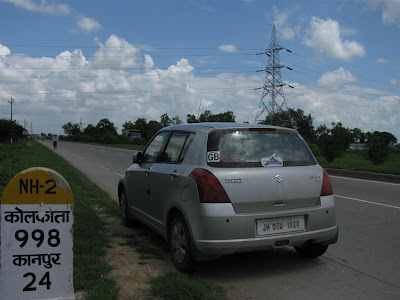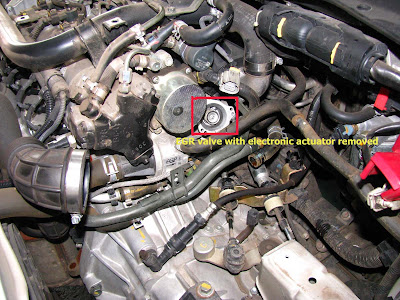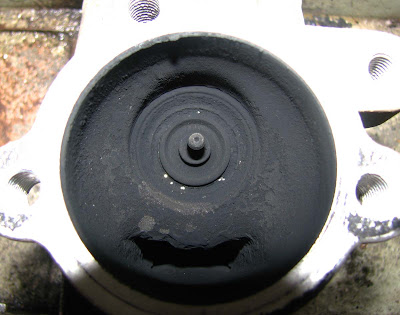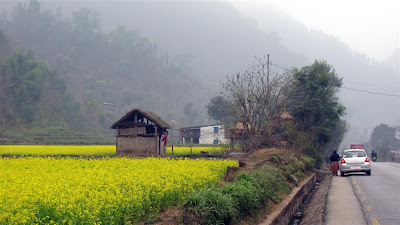
The Swift somewhere in the Terai region of Nepal
Since the long drives to Delhi and Bombay in late 2007, I did several road trips to nearby places like Kolkata, Ranchi, Bokaro, etc. in 2008. But both the car and I were getting restless for another proper L O N G drive. So when a neighbour in Jamshedpur returned from a drive to Kathmandu and shared his experience with me I decided to do this route too – Jaya and I had never been to Nepal before and as the route passed very close to Bettiah (a small town in North Bihar near the Nepal border) Jaya was very excited as she had spent many memorable years of her childhood with her grandparents there.
Major Amitava Ghosh (retd), a childhood friend of mine from Ranchi decided to join us for this trip and since the route passes through Ranchi we could conveniently pick him up from his house and drop him on our return leg.
A brief account of the drive is given below :
Day 1 (07.01.09)
Jaya and I drove to Ranchi (132 km) in the evening and spent the night at Amitava’s place.
Day 2
The three of us drove to Motihari (489 km) via Barhi, Nawada, Bakhtiarpur, Hajipur and Muzaffarpur. We wanted to reach Motihari by sunset but our plans went awry as the highway between Muzaffarpur and Motihari was blocked by a Muharram procession and we were forced to take a long detour through village roads which were very narrow and broken. We reached Motihari at around 8 PM and put up in a hotel.
Day 3
Drove to Bettiah (47 km) and spent the day sightseeing at Bettiah. Spent the night with relatives there.
Day 4
Drove to Kurintar (234 km) in Nepal via Raxaul (India), Birganj (Nepal), Hetauda, Narayanghat and Mugling.
We started early in the morning from Bettiah and had to drive very slowly due to dense fog. To make matters worse, about 40 km of the road before Raxaul is in totally dilapidated condition. The car’s suspension performed admirably. After entering Nepal (at Birganj) we had to get the car permit (called ‘Bhansar’) made before proceeding further.
From Birganj we proceeded to Hetauda which is a major junction point of several roads. Our plan was to go to Pokhara but luckily we learnt through a Nepali news bulletin on the car radio that hotel staff at Pokhara had gone on strike. So we decided to proceed towards KTM. Someone at Hetauda told us that there are as many as 3 roads leading from there to Kathmandu but 2 of them are very steep with broken surface and therefore not advisable for small cars. The best (and longest) road is through Mugling and we proceeded to Mugling.
Mugling is a small town where the highway forks left (west) to Pokhara and right (east) to KTM. We turned towards KTM and stopped at Kurintar (just 6 km from Mugling) to take the awesome ropeway to Manakamana. This ropeway elevated us by 1.044 km (took us to an altitude of 1302 m from 258 m) over a distance of 3.02 km in 10 minutes. It was quite cold at Manakamana. This place has a temple and great views of some Himalayan peaks. For our return cable car ride from Manakamana we had to stand in a queue for more than an hour and by the time we returned to Kurintar it was getting dark. So we spent the night in a hotel at Kurintar.
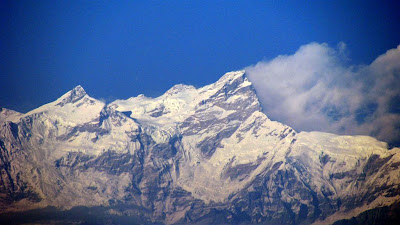
View of Himalayan peaks from Manakamana
Day 5
Drove from Kurintar to KTM (108 km) via Naubise. This road is quite scenic and there are lots and lots of ghat (hill) stretches. As I have reported before, the Swift Multijet diesel engine is a great one for hill climbing as peak torque of 190 Nm comes at a low 2000 RPM.
While entering the capital city of Kathmandu we had to stop to show our papers (Bhansar) and pay municipal tax at a checkpost. Some guides / hotel agents are always hanging around the checkpost to catch tourists. I identified one smart guide-cum-agent who sat with us in the car and guided us through the crowded streets of KTM to a nice hotel at Thamel (a prime central location for hotels and shopping). It being off-season, we got big discounts on the hotel tariff.
After settling down in the hotel (around 11 AM) we left for KTM sightseeing and also booked our tickets for a mountain flight. We saw the Royal Palace (from outside), Rani Pokhri, Durbar Square, etc.
Day 6
We drove from the hotel to Tribhuvan International Airport early in the morning to take our mountain flight. We flew Yeti Airlines in a Jetstream 41 turboprop aircraft. The aircraft flew eastwards along the Himalayas to Mount Everest and we saw many awesome peaks on the way. It was a great thrill to see Mt Everest (Sagarmatha in Nepali). We flew beyond Everest to Makalu and then the plane took a U-turn and headed west towards KTM. As we were approaching KTM, the Captain announced that we could not land at KTM due to sudden bad weather and we were going to land at Pokhara. All the passengers were delighted with this sudden development as Pokhara lies west of KTM and going to Pokhara meant an opportunity to see the Annapurna range in addition to the peaks we had already seen – that too free of cost! The plane landed in Pokhara and after about 45 mins of waiting there we flew back to KTM. It was an awesome experience – our total flying time was about 100 minutes and we were enjoying the view of the majestic Himalayas almost throughout.
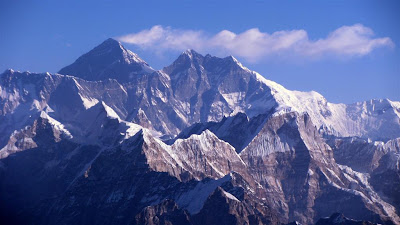
View of Mount Everest from the Mountain Flight
Check out more pics taken from the aircraft at http://picasaweb.google.com/debashis1/MountainFlightFromKathmandu#
After returning to KTM airport we went sightseeing to Pashupatinath temple and Boudhnath – it was nice to have our own car for moving around and sightseeing in KTM. I had collected a KTM road map from the hotel and that helped me to navigate through the city.
After returning to the hotel and having lunch we left the car at the hotel and went sightseeing / shopping by foot and riksha. Jaya and I again spent some time at the Durbar Square which we found to be the number one worth seeing site at Kathmandu with all its ancient temples and palaces – quintessentially Nepali. We were lucky to see the little living goddess appearing briefly at her viewing balcony at the Kumari Temple. She appeared to be about 5-6 years old, a cute little thing all decked up in colourful clothes – she seemed to enjoy all the adulation and attention while waving playfully from her first floor balcony to the audience below.
Day 7
Drove from KTM to Saura (170 km) on the outskirts of Royal Chitwan National Park. To go to Saura we turned left from Mugling towards Narayanghat (also called Narayangarh). At the Narayanghat intersection we turned left towards Tandi which is 13 km from the intersection. At Tandi we turned right into a narrow and potholed village road and reached Saura after 7 km.
At Saura we put up in a resort with independent cottages. While Jaya and I chose to just relax, my friend Amitava went for an elephant ride to see some deer and a couple of domesticated rhinos in a zoo-like enclosure and came back with body-ache! I would not recommend Saura to any serious nature lover. I was told that to actually see animals in the wild one has to go deep inside the Chitwan National Park.
Day 8
Drove from Saura (Nepal) to Hajipur (India) – a distance of 320 km. One good thing about spending our last night in Nepal at Saura was that we were quite close (just 128 km) to the Indian border at Raxaul. We started early in the morning at 5 AM from Saura and though I had to drive through light fog in some places, we managed to get out of Nepal by about 8 AM without being bothered by the pesky traffic checkposts which I had found quite annoying while driving inside Nepal. After entering India at Raxaul I again had to drive through the painful cratered stretch of road to Motihari. The fog was also dense in this part even at 9 AM. After Motihari the drive to Hajipur was quite smooth. We put up in a hotel at Hajipur for the night.
Day 9
Drove from Hajipur to Jamshedpur (472 km). Dropped off Amitava at Ranchi en route. The roads on this route are quite good – both in Bihar and Jharkhand – and so we made good progress and reached Jamshedpur well before it got dark.
Car’s performance
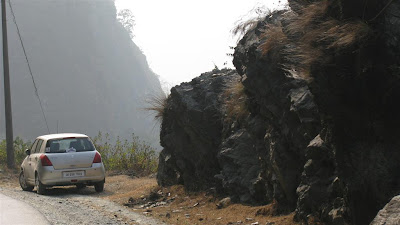
I have already talked about the hill climbing ability and good suspension of my Swift Vdi. The handling and steering of the car at the countless hairpin bends in Nepal as well as in Jharkhand was very satisfactory. Over the entire distance of 2000 km I got a mileage of almost 24 km per litre of diesel which is very good considering the numerous ghat (hill) sections, a few bad stretches and dense fog in some areas requiring driving slowly in 2nd / 3rd gear. The use of air-conditioner was negligible.
The main negative aspect is the low ground clearance (17 cm) of the car despite its 165/80 R14 tyres. The front bumper tends to scrape the ground while driving through craters. Those are times when I wish I had a SUV with large ground clearance. Then I remind myself about the much higher fuel consumption of the SUV’s and the thought quickly passes!
Some hints and tips for tourists visiting Nepal
- Indian currency is readily accepted all over Nepal, in big as well as small establishments (including roadside dhabas). The present exchange rate is 100 Indian Rupees = 160 Nepali Rupees. Everyone knows the exchange rate and adheres to it religiously (no commission for exchanging Indian Rupees to Nepali and vice versa).
- The above notwithstanding, Indian currency in denominations of INR 500 and INR 1000 are usually not accepted. We had been warned about this and therefore carried only INR 100 notes.
- Excessive bargaining is required for everything as prices quoted to tourists is usually highly inflated. My wife bought some trinkets for NC (Nepali Currency) 100 where the initial price quoted was NC 900!
- Hotels are plentiful as the economy is tourist driven. So one can get big discounts, especially during off-season. It is advisable to look for hotels after reaching your destination in Nepal rather than booking in advance. You are likely to be fleeced if you book in advance through the internet or travel agents. We stayed in a 2-star rated hotel in Thamel (one of the ‘posh’est tourist districts in Kathmandu) for INR 450 (including tax) per night.
- There are numerous traffic checkposts and municipal tax / toll collection points along the highways where they often try to fleece the tourists by overcharging or harassing on some pretext or the other. One must insist on seeing the tax / toll token (where the required amount is printed) before paying.
- There are different tariffs (entry tickets, toll, airport tax, etc.) for locals and foreigners. The tariffs for Indian nationals are usually the same as for locals.
- Nepal is going through a politically volatile and turbulent period after the abolition of monarchy. ‘Bandhs’ and road blockades are not uncommon. We were stuck in one such road blockade set up by some young political activists but were allowed to proceed after we identified ourselves as tourists.
- There is acute shortage of electricity in Nepal. Even in the capital city of Kathmandu, power is available only for 8 hrs in 24 hrs. In other places, the situation is even worse. It is important, therefore, to ascertain beforehand whether your hotel has adequate back-up systems for electricity and hot water.
Check out some of the pics I took in Nepal at
http://picasaweb.google.com/debashis1/NepalTripByCar#
